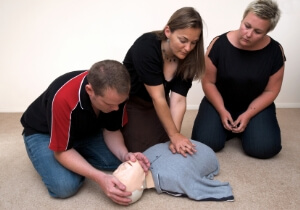CPR Skills Save Lives
 The three Rs (reading, writing and 'rithmetic) may soon be joined by a fourth: CPR, or cardiopulmonary resuscitation. Without CPR, the survival rate of cardiac arrest is less than one percent, but bystander CPR can double or triple the chances of survival. This has prompted the American Heart Association to draft a bill making CPR training mandatory for high school graduation. Under the proposal, Minnesota high school students would be required to take a basic 30-minute, hands-only CPR and defibrillator usage course which would be funded by local providers in the community. According to officials with the Duluth Public Schools, students at East and Denfeld High Schools currently learn CPR techniques as part of the required health curriculum.
The three Rs (reading, writing and 'rithmetic) may soon be joined by a fourth: CPR, or cardiopulmonary resuscitation. Without CPR, the survival rate of cardiac arrest is less than one percent, but bystander CPR can double or triple the chances of survival. This has prompted the American Heart Association to draft a bill making CPR training mandatory for high school graduation. Under the proposal, Minnesota high school students would be required to take a basic 30-minute, hands-only CPR and defibrillator usage course which would be funded by local providers in the community. According to officials with the Duluth Public Schools, students at East and Denfeld High Schools currently learn CPR techniques as part of the required health curriculum.
Dr. Mary Boylan, a cardiothoracic surgeon with St. Luke's Cardiothoracic Surgery Associates and a member of the American Heart Association Midwest Affiliate Board of Directors, believes that students are at an ideal age to learn CPR. "In one way or another, we're all going to be touched by heart disease, the leading cause of death in the U.S.," she says. "High school students have a lifetime of opportunities to use their CPR skills to save lives."
"Cardiac arrest can happen to anyone, anytime, anywhere, whether you're at a football game, at the theater, at home or on a plane," Dr. Boylan says. "Giving citizens the skills to intervene until the medics arrive can literally make the difference between life and death." She adds that preventing and reducing heart disease is always a top priority at St. Luke’s.
For classes on CPR and other basic life support (BLS) skills, visit St. Luke's Classes and Programs.

